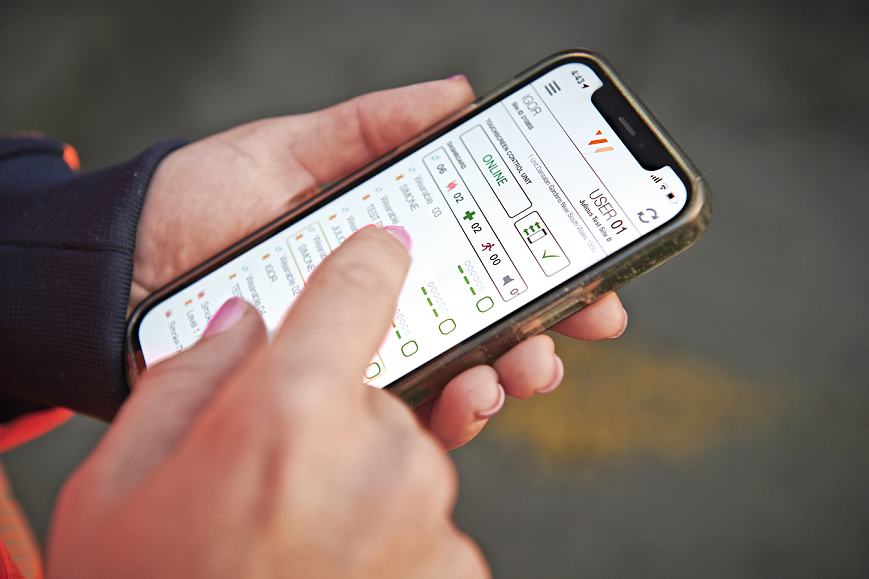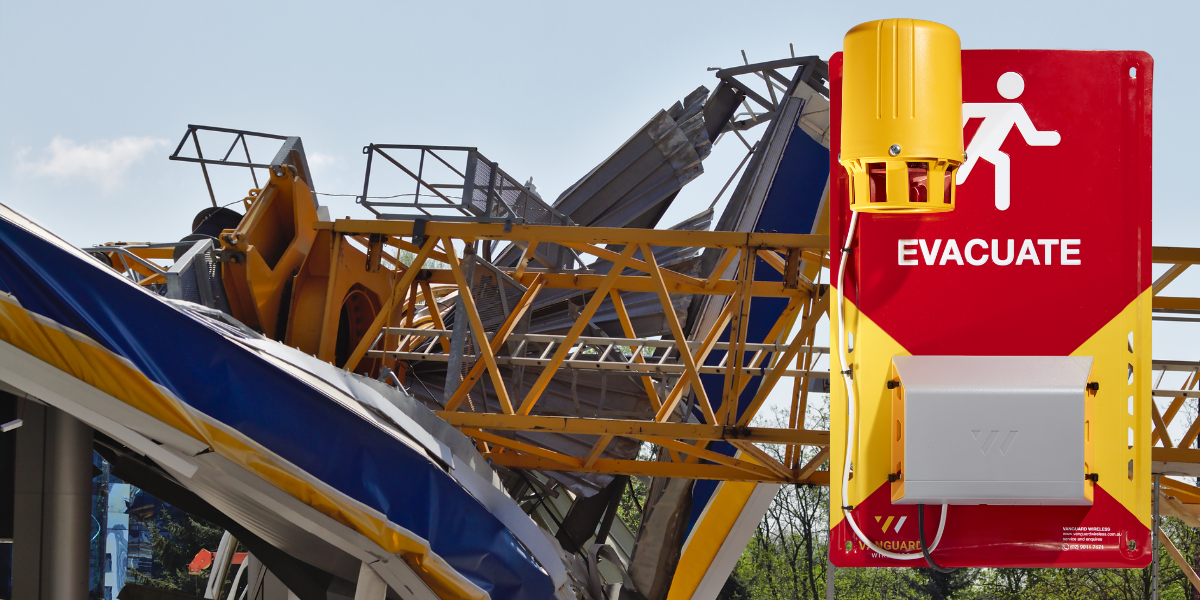A crucial aspect of emergency preparedness is the inclusion of an evacuation alarm system which often includes at least one evacuation siren. Sirens play a pivotal role in alerting people to imminent danger and guiding them to safety. The warning tends to be universal regardless of language, location, age, or job role. When a siren sounds you know it’s warning you to imminent danger and strongly suggesting you either relocate to a safer place or lockdown to avoid the danger.
There are different sirens available on the market. The selection process should factor in how your workforce will use it, how they will hear it, what action they will need to take when they hear it, and what ongoing management and maintenance is required for its continued use.
How Evacuation Sirens Work
Evacuation sirens are designed to emit loud, distinct sounds to alert people of potential hazards such as natural disasters, industrial accidents, or other emergencies requiring immediate evacuation. These sirens serve as a critical component of emergency management systems, providing clear and timely warnings to residents, workers, and visitors in affected areas with a one-to-many instant alert.
Based on your workplace’s emergency plan, once the siren sounds your workers may be required to evacuate to an off-site muster point where a roll call can be conducted (used by construction sites, offices, and industrial facilities). Alternatively, they may be required to use equipment on site to protect them, such as escape pods (used by offshore oil rigs and cargo ships) or reinforced tunnels (used by underground mines and below ground installations).
Your evacuation system might offer a range of siren patterns to be used in different types of emergencies. If there’s a structural issue or site intruder, you may want workers (and visitors) to remain in their work area until the danger is addressed. Your evacuation system might also issue instructions to use safety gear like gas masks or life vests.
It’s important that during a worker’s induction it’s clearly communicated what this siren communicates and what action is required, with regular siren tests and drills undertaken to ensure worker preparedness. Generally, this is managed by a nominated fire warden or workplace emergency response team.
Types of Evacuation Sirens
Several types of evacuation sirens are used worldwide, each tailored to specific needs and environments. In Australia, common evacuation siren options include:
- Tone Sirens: these sirens produce a continuous, uniform sound that is easily recognisable as a warning signal. They are effective in conveying urgency and prompting immediate action among listeners.
- Voice Sirens: these evacuation sirens combine pre-recorded or live voice messages with alarm tones to deliver specific instructions during emergencies. These sirens offer enhanced clarity and guidance, particularly in situations requiring detailed information or evacuation routes.
- Rotating Sirens: rotating sirens emit sounds in varying directions, covering a wide area with their rotating mechanism. They are suitable for alerting large populations dispersed across diverse landscapes, such as rural or coastal regions.
- Wireless Sirens: wireless sirens utilise radio frequency or cellular networks to transmit warning signals remotely. They offer flexibility and scalability, enabling rapid deployment in areas lacking traditional siren infrastructure.
Each type of evacuation siren has its advantages and applications, depending on factors such as population density, geographic features, and emergency response protocols.
Sound Requirements for Evacuation Sirens
Effective evacuation sirens must meet specific sound requirements to ensure their reliability and comprehensibility in emergency situations. In Australia, these sound requirements are governed by national standards and regulations, which can include:
- Sound Intensity: evacuation sirens must produce sound at a sufficient intensity to penetrate indoor spaces, overcome background noise, and reach all intended recipients within the designated evacuation zone. The sound intensity is typically measured in decibels (dB) at specified distances from the siren source.
- Tonal Characteristics: the tone or pitch of evacuation sirens should be distinct from other ambient sounds to avoid confusion and facilitate prompt recognition by listeners. Clear differentiation between alarm tones and regular signals helps minimise false alarms and enhances worker trust in the warning system.
- Duration and Repetition: evacuation sirens should emit warning signals for an appropriate duration to ensure that individuals receive and acknowledge the alert. Additionally, repetitive or cyclical patterns of sound can reinforce the urgency of the situation and prompt immediate action among recipients.
- Localisation and Directionality: Sirens deployed in urban or densely populated areas should incorporate directional features to minimise noise pollution and prevent unnecessary panic among unaffected residents. Directional sound projection helps focus the warning signals toward the target area while reducing dispersion into surrounding neighborhoods.
- Compatibility with Assistive Technologies: evacuation sirens should be compatible with assistive technologies such as hearing aids and visual alert systems to accommodate individuals with sensory impairments or disabilities. Integration with alternative communication channels, such as text messages or mobile applications, can enhance accessibility and inclusivity in emergency warnings.
By adhering to these sound requirements, evacuation sirens can effectively fulfill their role as primary warning systems, mitigating risks and saving lives in times of crisis.

A Smart Evacuation System
Orisent fire evacuation alarms are available as:
- a standalone system, with just the evacuation trigger and evacuation siren hardware
- a locally managed system, with evacuation alarm hardware managed wirelessly by a control panel
- a cloud managed system, with evacuation sirens and triggers managed wirelessly by a smartphone app, web-based user portal, and optional control panel
The systems can be temporary or permanent and are configured to each site’s specific requirements including geographic layout, work hours, risk profile, and budget.
Orisent’s product range - pictured above - includes three types of evacuation sirens: an evacuation siren (127dB/1680Hz), the combined evacuation trigger and siren (110-115dB), and the combined nurse call trigger and evacuation siren (110-115dB).
Based on the type of fire alarm system you select, you can also access a range of exclusive features including a smartphone app, control panel, adjustable siren settings, false alarm prevention protocols, lockdown modes, zoned evacuations, geofenced evacuations, and third-party hardware and software integrations.
Evacuation sirens are indispensable tools for emergency preparedness and response, serving as early warning mechanisms for a diverse range of hazards and threats. By exploring the various siren options and sound requirements, workplaces can enhance their resilience and safeguard the well-being of workers, visitors, clients, residents, and neighbors. As technology and best practices evolve, ongoing efforts to optimise evacuation sirens will remain essential in ensuring the safety and security of all types of working environments.


